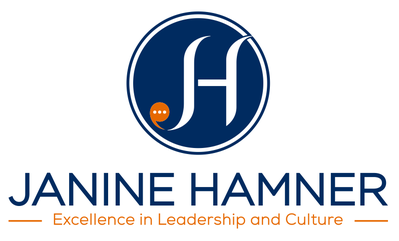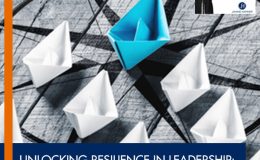
What makes up the success of any business? What are the strategies they need to execute? Belle Walker and Alex Salinsky discuss the importance of creating growth within your organization. Both of them are working and helping organizations develop strategies aligned with the organization’s structure to reach their goals successfully. In this episode, they take a deep dive deep into having the right structure alongside the right vision and mission. They also explain how to assess data and numbers for organizations to create data-driven decisions for better performance and productivity.
GUESTS: Belle Walker | LinkedIn | Visit their Website: Belleview Consulting
Alex Salinsky | LinkedIn | Visit their Website: Uncommon Advisers
HOST: Janine Hamner Holman | Janine@JandJCG.com |LinkedIn, Facebook, Instagram, and Twitter |
—
Listen to the podcast here
Creating Growth: A Conversation With Belle Walker And Alex Salinsky
What am I paying attention to? Math. For those of you who know me, Math is not something that I pay attention to, so why in the world am I paying attention to Math? I was introduced to two amazing collaborators and I have them to thank.
In early 2021, I met these wonderful people. I realized that sometimes 1 plus 1 plus 1 equals 3, and sometimes 1 plus 1 plus 1 equals 1. What do I mean by that? Sometimes you meet people with whom you click so well that you think, “I want to be your friend!” This isn’t something we adults typically say but, occasionally, we get to say that. We meet people with whom we wish to collaborate.
What we’re doing is a different kind of show and I am so excited! We have already had a similar conversation as a presentation. Today we are not presenting as our goal is for this to be more casual, fun, and awesome than it was the first time.
I want to introduce you to my co-collaborators, Alex Salinsky and Belle Walker. Please introduce yourselves.
I’m Alex Salinsky. I’m excited to be here with Janine and Belle. What I do and my organization do is help companies and businesses get ready for sale and scale. We do that from the inside, looking at the operations and systems, the routines, and the way that people are structured in one fell swoop. Occasionally, I get the opportunity to team up with Belle and Janine on projects! I’m happy to be here.
I’m Belle Walker. I’m delighted and honored to be rounding out this trio. I’m with Belleview Consulting, and I take organizations from friction to function. On the surface, there’s a lot of overlap with what Alex and Janine and I do, which is perfect because it means we know how to complement and support each other, which I’m excited to explore later. I also zero in on structures and then also on the process side to make sure that everything is operating smoothly and that clients don’t become victims of their own success.
At my company, J&J Consulting, we work inside of organizations on the people part, to create “people thriving organizations.” It could be anywhere people are not working together as well as they might be. Between structure, function, people, and all of the different elements that we bring together, you can see how the three of us would be an awesome team for an organization.
Alex focuses specifically on organizational strategy in addition to a lot of other impressive things. Belle focuses on processes and structure, and I focus on getting people appropriately motivated and rowing in the same direction. If you fine tune all those parts, it is extremely likely that an organization will function optimally.
Imagine you or one of your clients, friends, or somebody who you met at a networking event with the following scenario. You’re the founder of an organization and you’ve been working extremely hard to get to where you are now. You thought that it would be so much easier than it has been. And you thought that, by now, your organization would be working like a well-oiled machine… except that’s not at all how it’s going.
You’re putting out fires so you’re being reactive instead of proactive. Or, it could be that you feel like you’ve hit the growth ceiling, knowing how to do what you know how to do, but there’s a lot more that needs to happen and you’re not sure how to get it there. Recently, I was talking with a client who told me that before he and I started working together, he had decided maybe he would have to close down his company because even though they were incredibly profitable! His company was a mess internally and he couldn’t figure out how to fix it.
In these kinds of organizations, sometimes you’re watching money fly out the door and you’re not even clear if you’re getting returns on those investments. It could be that your people are floundering or some of them don’t have any clear direction or accountability. It could be that you’re mired in miscommunication and tense relationships and you’ve been hoping that things are going to get better. If you grind a little more, you’re going to get to the other side.
What we know is that by focusing on some key elements, it doesn’t have to be this way.
Alex: This isn’t about creating some key shift from an organization that’s in pain to an organization that’s succeeding. Everything that we’re looking at is in the realm of strategy, process, and people.
A way to get started is by imaging, that is by defining, where it is that we want to go. That’s partly the goal that you have for your organization. It could also be the goal you have as a leader for your life. In part, we get into business because we have some ideas of what that will do for our lives. That’s setting the strategy, and then we help you think about the process that’s going to take us there. What’s the ladder we’re going to climb? What’s the navigational route, and who are the people, or what are the roles that will get us there?
There are companies that, at all different stages, need to be defining this North Star, the route they’re going to take, and who they need to climb the ladder.
Belle: Let’s take a hypothetical example. You can imagine an organization that is creating technology to monitor energy usage for commercial buildings. You can have a team that’s got a couple of founders and a bit of a C-Suite built out.
The strategy is made up of vision, metrics, and a little bit of an organizational structure. Share on XThey’ve got millions of dollars in funding, but they want to go from that handful of employees to dozens of employees in a few months. They want to go from supporting a handful of buildings to hundreds of buildings or maybe even 1,000 within a year. They’ve got some sense of where they want to go. For many companies, that may seem like goals, but is it enough? Is that a sufficient vision? Alex, that sounds like a strategy, so I’m going to pass that question right back to you.
Alex: The place where we often start is with the strategy, and the strategy is made up of vision, metrics, and a little bit of an organizational structure. I want to check in to see if our vision is aligned. We’re often working with founders or even leaders of departments. We’re asking, “What does the organization look like?” A lot of times, the organization wants to be attractive to investors. They want to be in a position to exit through a sale or maybe to IPO one day.
What do the leaders find? Sometimes in their personal lives, they want something like less time in the day-to-day operations, more time in customer acquisition, more time being the face of the organization, and less time in the trenches. In some cases, they want things like four-day workweeks so they can spend more time with their families.
There is no wrong answer for this. It’s important that there is an answer and that we can align what’s going on with the organization and what’s going on with the leaders. That’s the point at which we can start thinking about metrics. We can only choose metrics if we know what we want. Once we know what we want, we can start choosing the numbers that drive us to action.
I want to jump in here with you. I’m onboarding a brand new client. I’m not 100% sure that he knows yet what he wants in his organization, even though the company has been around for 5 or 6 years. There’s not an organizational structure there yet. My experience and opinion is that structure should follow strategy. Alex and Belle, where do you come in on that structure strategy, and how to get at that if any of our readers are in a similar position with their organizational structure?
Alex: There is a wiggly word that can feel too abstract sometimes, and it is a mission. The mission feels abstract because sometimes, people say it, and it comes with a visualization activity, maybe some meditation, and reading star charts. I don’t think there’s anything wrong with that, but it’s not for everybody. The mission is sitting back and not caring so much about the situation you’re in, but caring about where you want to go.
If you know where you want the organization to go and where you want to go, everything is going to come back to that, so we’re going to cascade that down to the rest of the organization and the rest of the planning. I’m in agreement with you. It’s going to be hard to choose the organizational structure or the right metrics if we don’t know what we’re measuring or what we’re trying to structure.
Belle: I’m largely going to echo what both of you are saying. The one caveat here is that sometimes, we’ve pushed the boundaries of functionality a little far. It depends on how big your pain is and how urgent that need for structure is at that moment. Coming back into your wheelhouse, Janine, do your people even have a basic level of support? The org structure supports both directions. It supports the achievement of the goals, but also the success, careers, and well-being of the individuals.
If everyone in your team is floundering and fleeing the boat, getting something in place that is optimized around supporting the needs of the team first can be worthwhile, but heavily cautioning that with the need for structure long-term to follow strategy. Be very aware that that is a worst-case scenario situation because changing it is going to be difficult.

Creating Growth: The mission is sitting back and not caring so much about the situation you’re in but caring about where you want to go.
Alex: If you have a broken bone, you’ve got to put on a splint to keep walking. I’m in agreement.
Belle: Remember, if you leave the splint on too long, you have to re-break the whole thing. That’s a fabulous metaphor for this.
Alex: Once we have our mission, we know what metrics to use because that’s the next thing that happens. People are sometimes afraid to use data or they’re uncomfortable with it. When I ask people, “Why don’t business leaders use data?” 50% will say, “We don’t know what to do with it.” That’s because you don’t know yet what you should be looking at. I promise you. We put the right 3 to 5 metrics in front of you that represents what you’re trying to do with your organization at routine and cadence, you will know exactly what to do with them because those numbers are going to move you. When you see something go positive or negative, or even stay neutral that you didn’t expect it to, and is an important number to you, your brain is going to start getting curious about that. It’s like, “We did all this work. Why isn’t the number moving?”
You’re going to start looking at more data. You’re going to start interviewing people. You’re going to start asking questions, and you’re going to start coming up with initiatives. And you know what? That’s data-driven decision-making. You’re doing it! It’s rarely the fact that people don’t know what to do with the numbers. It’s that we’re not putting the right numbers in front of them and we’re not putting a good routine around it. The next thing that most organizations can benefit from is a data routine. Sometimes, we have a data geek and they’re great. They’re awesome with numbers and always in it, but then we have another problem which is they’re really into it, but the rest of the team is overwhelmed by it!
Belle: You used such an important word there about expect and direction. You don’t need to be a Math geek to have expectations about up, down and steady. You can get excited about those trends as long as you can see them.
And they’re also going in the way that you want them to.
Alex: You’re at this place where you can start releasing responsibility to your team. It’s not about the founder anymore. It’s not about the leader of the team doing everything and doing this thing that some people call delegation, but it’s commanding people rather than releasing the responsibility of ownership. That’s a process. Honestly, it can take a couple of months, but once we’ve gone through that process of releasing responsibility to the team, we can start thinking about things that are maybe more in the domain of balancing, but things as org structure. We can be a little more strategic about who we’re inviting into the organization.
Once we know what we want, we can start choosing the numbers that drive us to action. Share on XOne mistake we joked about that I see a lot in the technology organizations I work with is you’ll have a founding team and a founding technologist. It’s our superstar, awesome technologist. We went back and we had a team of two co-founders, one business founder and one technology founder, which is often a way that companies start. It makes sense that we have a technology leader, but when we find success, we’re ready to grow, and add new people to the team. There’s a sense that maybe that founding technologist had a C-Suite title of CTO or Chief Technology Officer, waiting for them. What we find out, and this happens with even the CEO role, in a maturing growing organization, what those roles are and what they mean change. Being a chief technology officer does not necessarily mean you are the best at technology. It means that you’re filling a role where you’re facilitating the communication and the strategy of all the technology organization on behalf of the team of the investors, clients, and everybody. Not every technologist is ready for that.
A lot of times, we see people not being strategic with their org structure and looking out twelve months and what they need. They’re planning, in this example, for the founding technologist to be the CTO with no preparation whatsoever. This is somebody who has built up a life of being an amazing technologist. They have climbed a mountain of technology, but then we ask them to hop over to this other place, which is called leadership, management, customer relations, investor relations with no support!
They didn’t build the career up there, and it falls out from under them. In this example, we either have to say, “This isn’t going to be the right person. We have to look around in our org structure and use a different strategy,” or, if this is going to be our person, “How are we going to build them up? How are we going to structure underneath them?” Those are some things on how to think about that strategy level. That starts to move us into how we are going to get to the place we’re trying to go. What I’ve been talking about is how to measure and plan the route, but how are we going to get there? That’s where Belle comes in and shines.
Before Belle hops in, I want to underline something that Alex was talking about, which is how often we in organizations take our superstar performers and promote them into management. We promote them into leadership because they’re so great at doing what they’re doing. Now, they’re going to manage all the other people, but we never help them learn how to manage. Ninety-one percent of managers have never been trained how to manage anything. So, it’s not surprising then that we have a lot of mischief happening at the level of management. If that’s one of the challenges in your organization, please reach out to us. We can help.
Belle: That is such a great tie-in to the process piece as well because when you talk about that support structure under a leader or a manager, that notion of delegation or handoff can be very difficult for a lot of new leaders. It’s one of the skills that Janine is talking about that a lot of folks don’t get trained in. I found that process gets a very bad reputation. A lot of people think it’s a four-letter word. A process is tricky because waving a wand and saying “we have a process” is not going to solve your problems. You need something that’s the right fit for your team, your situation, and your scenario.
We don’t just need a process. We need the right process?
Belle: I wish it was different because a process is a lot easier. Unfortunately, this is one of those cases where depending on the situation. A process can be worse than no process depending on your team dynamics. You might get into a little more, but depending on their balance of self-starters versus folks who are more comfortable with clear guidelines. If you’ve got a whole bunch of folks who want to know what they’re doing and be left to their own devices to figure it out, for small numbers, trying to impose any process on them can have detrimental results.
Whereas, when you start to get twenty A-performers and how amazing they are, that’s too many for each of them to keep all of the pictures in their brains. They’re going to need a little bit of process to help bring them together, which is like the mountain that Alex was talking about.

Creating Growth: It’s going to be really hard to choose the right work structure or metrics if we don’t know what we’re measuring and what we’re trying to structure.
If you’ve got a nice foothill set of mountains, the equipment you need is different than if you’re mountaineering. If you’re trying to slog through the snow or go over the ice, snow shoes probably will get you where you need to go. Hiking boots probably will get you where you need to go in either scenario, but, man, it’s going to be a lot easier and potentially safer if you’re matching what you have to the conditions that you’re operating under.
Alex, this is also one of those places where you get a bit of a virtuous cycle, because as you start to adapt these processes to the current scenario, ideally, you start to achieve these goals and then you need to start thinking about, “Are we static in our North Star?” I don’t know if that’s a situation you run into with some regularity.
Alex: I remember you had to go back and forth. Hopefully, it’s virtuous. It could be the opposite. If you imagine you’re on a boat and you have your navigator and your captain, the captain is setting the mission and the navigator is checking the compass against the stars every now and then. Hopefully, you have some people shoveling coal or paddling, however that boat is moving.
All of that is happening, but if you just have your captain and shovellers or steam engine, you’re moving. That’s cool. You’ll see movement. Is it movement where you want or are you just in the movement because of the navigator and the captain? Are you talking a lot and not moving anywhere? It is a process, like you’re saying Belle, that doubles back on itself again and again. We can do it in a way where it’s a virtuous cycle. We want it to be a virtuous cycle. We can do it in a way where it’s less virtuous also.
Belle: I love these analogies! Let’s go back to the boat. If your captain knows exactly where you’re trying to go but the navigator doesn’t, if the navigator knows precisely how to read the stars but hasn’t bothered telling anyone you’re off track, or if your rowers or stokers are phenomenal at what they do but the ship is not pointed in the right direction for any of the other reasons, nobody is winning! But also, nobody is winning if those three statements aren’t true. If the captain doesn’t know where they’re going, if the stokers don’t know how to keep the fire fed, or if the navigator doesn’t know how to read the stars. Janine, do you want to talk to us a little more about getting those right people in those right places?
Absolutely. One of the things that’s so tricky is that, when we’re building an organization in the early stages, we’re often hiring for, “I need somebody who can do X, who’s a good rower, and can understand the stars.” As we grow, one of the things that’s important is to keep our eye on that North Star or where is it that we’re headed. I do a lot of work in the space of diversity, equity, inclusion and belonging, (DEI&B) and people will come to me and say, “We need to do something about this DEI&B stuff.” I say, “That’s great. Why?” There’s often silence.
Sometimes, they say, “It’s what everybody is doing.” Or, “We are working on getting government contracts, so we need to be able to say that we’ve got something on diversity.” Or, organizations will say, “In order to meet the needs of our mission in the world, we need to be a diverse organization.” Those are the organizations that I love working with where it’s something that’s connected to their mission. If it’s those first two things, we’re not likely to be the right consultant for you.
As we were talking about back at the top of the show, if what you’re doing isn’t connected to what you’re up to and you’re doing it just because you’ve got to check a box, devote the smallest amount of time and resources to it as possible and have it be the least public thing that you do. It’s part of the problem and why so many of the things we’ve done around DEI&B have been failures – we wanted to do something…but not much…and it isn’t connected to our mission.
There can be a lot of mischief that gets created if we take on processes, procedures, and structure that isn’t moving us towards our mission.
When we look at what keeps people engaged and connected in an organization beyond getting a paycheck, what they care about is having work that they feel like they made a difference at the end of the day. They moved the boat forward in their own way. There’s a great story about a CEO of a hospital. He was talking to two different guys whose job was to clean the floor. The first guy said, “My job is to clean the floor.” The 2nd one said, “My job is to make my floors sparkle so that my patients heal faster.” That’s the guy you want.
Sometimes, if you have a broken bone, you've got to put on a splint just to keep walking. Share on XYou want the guy who understands what you’re up to as an organization and has bought into it. How you get there is you create and design jobs so that they are connected to the mission of the organization, and you then figure out how people want to be recognized. When I was young, people used to always talk about the golden rule, which is to do unto others as you would have them do unto you. What we have figured out along the way is that there’s a platinum rule, which is to do unto others as they would have done unto them. You want to find out how people love to be recognized, and recognize them that way.
Belle: I love that framing as well around, “You have to find out,” because that’s one of the key caveats of the platinum rule. If actually you want to follow it, you have to ask, research, or observe. There’s something external to the brain that is doing the treating if you’re going to be successful, and that stuff gets overlooked sometimes.
It’s overlooked a lot. Thank you.
Alex, did you want to jump in here for a sec too?
Alex: I would jump in that people who work with us are doing it for a reason. We don’t know what that reason is. They came to us and said, “I want to work with you.” They could have not done that. What is it about what you are doing that’s appealing? Is it just to make a living? Probably not. There are probably other ways they could do it, so there must be something about the environment or the opportunity, or maybe a chance at growth, or maybe something about the culture. We don’t always know this. People will do it for different reasons. When we sit and make guesses, that’s not going to work. It’s about mission alignment. I’m echoing everything that you’re saying, but Belle is right. It’s a conversation that you have with a real person.
It’s one of those things that people are understanding more as we move through this period in time that we’re in. Thinking back a couple of years ago when the world started using the word COVID and COVID-19, the thing that enabled the organizations that have come through this the best (their coal, their rowers) was communication. It was to communicate often and transparently.
If what I have to tell you is, “I have no idea what we’re going to do, and I know and believe we are going to get through this,” then say that. The organizations that have said that and have been clear, like, “I’ve never lived through a pandemic either, so I don’t know, and I know we’re going to figure it out, and figure it out together.” Those are the organizations that have created that sense of we are all in it together. We are vested here.
I hate the phrase, “We are a family,” because organizations are not families. “We are a team. We are in this together and we’re going to figure it out.” Those are the organizations that have thrived.
When we think about the Millennials, and the Gen Zs who are coming up after them, by 2015, they will be 75% of the workforce. If you haven’t figured it out yet, what we are talking about in this episode is what these folks care about. If you want to win in the war for talent that we are all in, these are the things that your organization gets to care about.
Belle, did you want to hop in here for a sec before we move on?
Belle: This is part of why it’s such a fabulous collaboration across the three of us because that fundamental “why” is a uniting theme. Alex tends to be more involved in defining the why, but it’s so crucial to the work that all of us do. It is going to be what ties people back. You can have the best process or strategy in the world, but if you haven’t communicated that why to people in a way where they can connect, they’re not going to climb the ladder. They’re not going to reach the North Star even if they’re perfectly capable. I love that communication is that thread that ties all of the pieces together.
Alex: It’s the way to drive performance. When people say, “I want more performance and more productivity. How do I do it?” It’s not that hard. They are explicit expectations communicated regularly and a commitment from your team to do it. Commitment doesn’t mean, “I’m going to keep asking you if you’re going to do this until I hear you say yes.” That’s not commitment. Commitment is, “Here are my explicit expectations.” I’m bringing them to you again and again. They are very explicitly the same ones. I’m watching your words and actions to see if you’re committed to it. If you can get all of that, then you’re driving performance.

Creating Growth: If you haven’t communicated to people in a way where they can connect, they’re not going to climb the ladder. They’re not going to reach the north star even if they’re perfectly capable.
The other key in there is how you are communicating with your folks. I wasn’t explicit about the generation to which I belong. I’m the very last year of the Baby Boomers, which means I was born in 1964. I am 57 years old. When I was coming up in the world of work, people were motivated mostly through fear. People were motivated by fear, coercion, micromanagement, and by, “I’m going keep saying that thing. I’m going to keep banging you over your head. If you’re not doing it, I’m going to expose you as failing to the rest of the team.” Talk about mischief that was created!
What we have learned, in case we didn’t know it to begin with, is that this is not the best way to motivate humans. The best way to motivate humans is through something that Dr. Amy Edmondson at Harvard Business School coined, “psychological safety.” When we have psychological safety at work, that is when people are productively motivated. They will speak up. They will speak truth to power. They will get in what John Lewis called “Good Trouble” and raise issues that need to be raised so that the organization can make the best decisions going forward. Because they know that they are safe to do so and they won’t be punished for speaking up, raising concerns or asking questions.
The best way to start creating that is through regular communication, and the best way to do that is to get into the habit of debriefing everything.
The model that I love to point to for this is the US Marine Corps because these guys debrief everything. They’re like, “We made eggs for breakfast this morning. How did that go? What could have been better?” When you get into the routine of debriefing everything, and then you have a challenge, a hiccup, or something goes not as you would have liked, a debrief is no longer an opportunity to bash people over the head or for public shaming. It’s an opportunity to learn. Ultimately, that’s what we’re all talking about here.
How do you create a “learning organization” so that we are constantly checking in? So that we are asking, “Do we have the best people? Do we have the best processes? Are we aligned with our mission? Are our people motivated and are they happy? Do we have the right structure?” Things change along the way. What I love about how the three of us work together is that we help organizations with our collaborations to really become well-oiled machines so that everybody is going in the same direction towards the same North Star with the right strategy and structure to support what they’re up to.
Alex: I agree. I’ve learned a lot about psychological safety in organizations from you. I encountered a lot of researchers around goal-setting with your team. I grew up with expressions like, “Shoot for the stars. At least you’ll land on the moon. Set an ambitious goal that’s further than you think you can. Be inspiring. Kennedy had us go to the moon and we didn’t even think we could do it.” I believe all of that’s true. There are a lot of people who are highly motivated by that. However, the research, at least inside of organizations when you’re managing people who may not be 100% on the exact same ambition as you all the time, is to set very achievable goals and help them get there.
The systems and organizations that do that are more productive organizations. And, apples to apples when you’re able to compare them that way, they perform better than the organizations that have over-ambitious goals perhaps because that’s de-motivating. It doesn’t feel safe. You feel sure to fail. You show up in an environment and you’re pushed to do things that everyone’s pretty sure you can’t do anyway.
It’s like, “Why bother?” as opposed to, “Let me put it forth in front of you what we think is a very reasonable objective. The reason we hired you was for your talents. Your experience in these areas to hit this place given where you are should be reasonable for you to hit. If we can push you a little past that, that’s great, but the goal is the attainment of what we know we need alongside what we know you can provide.” When I saw that study on psychological safety, I thought of you.
Belle: That ties back in with the platinum rule. You said something very important at the beginning. Some people are motivated by that shoot for the stars approach or mentality. When you’ve got one of those people who says, “I can do that this year, but what are we going for? Show me the moon and the stars,” you have that ability by finding the balance. Realistically, for the majority of team members, you can say, “We are going to head for the stars. We’re confident we’re at least going to hit the moon, but for today, here’s the ladder. Here are the first three steps and I’d love to see you climb them.”
Alex: That’s exactly what I would advise. I’d be like, “Leaders, share your big, giant, awesome, and inspiring vision of how the world is going to change.” Share the very next step like, “Here’s the very next thing that I know we can do. I don’t know if we’re going to make it all the way over there, but that’s the idea given some time and some effort. The very next thing that I know we can do is this.”

Creating Growth: Not every organization needs support in its strategic direction, processes, and people’s well-being, but every organization does need to be solid on all of those fronts.
“The very next thing that you get to do, team member X, as your part of that is this. And your part, team member Y, is this.” It’s back to that communication. You communicate the big vision, the moonshot or the loonshot, where we’re going, and how we’re making the world a better place. If what we’re doing is making mops, how are mops making the world a better place? How will our mop rock and really help make the world a better place?
Alex, what is your part in getting that mop into the most people’s hands? Belle, what is your part in the engineering of the mop? Whatever your slot is in helping to make that come true, that’s how we get everybody moving in the same direction. That’s how we get the best people to stick around in our organizations.
I was on a call with a bunch of CEOs. They were talking about, “We’re losing people because of the Great Resignation. It’s impossible to find good people, great people or the right people.” My key point to them was, “Then keep your damn people. Stop creating mischief. Stop allowing mischief to happen inside your organizations. Ensure that your best people stick around.”
If that’s what you need, we are the team who can help you get there. Before we leave for today, do you have any other thoughts? Do you have any other things that you wish we had talked about that we haven’t yet talked about?
Belle: For my side, we’ve covered a lot of the basics. We’ve gone through some of these key challenges and probably our most visceral, but I’m going to come back to that broken bone example in the future. Sometimes, you need a temporary set, but be aware of the long-term implications. Even there, you’ve got a clear goal. The goal is to have a functional bone again. I love that all of these different pieces need to come together to do that.
Not every organization needs support in their strategic direction, processes, or people’s well-being, but every organization does need to be solid on all of those fronts.
That’s why we each own our individual companies and occasionally get to collaborate together. Alex, do you have any last words before we shut it down for today?
Alex: It has been a delight. It’s always a fun time to hang out with Janine and Belle because they have a lot of insights and I’m always learning a little bit more. We’re already so well-aligned because we’ve seen enough businesses move and occasionally not move. What has been great is we’ve been noticing the same themes and that’s reaffirming and enforcing.
If I were to share one thing, it would be if you’re in a situation that is difficult but you don’t know why, you’re hitting your head against the ceiling but you notice the ceiling is not supposed to be there, it’s supposed to be your inflection point. You’re looking at your team. You’ve been working. You’ve found this success where you’re at, and that shouldn’t mean that you’re going to the next multiplier of success. It’s supposed to be an inflection point, but you’re hitting the ceiling and not as much moving.
It would be time to have somebody come in and check it out. Have somebody look around and help you find the elevator or the stairs. It’s surprising sometimes that it’s just a couple of small shifts. It’s a little bit of a shift in mindset. Someone is showing you something you didn’t notice before because you’re in a new place you haven’t been before. You got here, but you haven’t been here before. You might be surprised how little energy it takes to make this shift and you might be surprised how fast you begin to see the results.
With some of the people that I’ve worked with, some of that has been the biggest shock. In a month, we started seeing the change. It was not just one person, but the team started seeing the change. If I hadn’t been doing this for a while, I wouldn’t have guessed that a little bit of energy and time can make such a substantial change so quickly.
That’s awesome. Thank you so much, Alex Salinsky and Belle Walker. As Alex said, it is always a delight to get to spend time in your company, learn from your brilliance, and get to collaborate with you. I hope all of our readers enjoyed this as much as we have.
Remember, great leaders, make great teams. Until next time.
Important Links
About Belle Walker
 Belle Walker takes organizations from Friction to Function, recapturing lost efficiency and engagement by aligning structures and processes with strategic goals. Her clients span tech, professional services, nonprofits, and more.
Belle Walker takes organizations from Friction to Function, recapturing lost efficiency and engagement by aligning structures and processes with strategic goals. Her clients span tech, professional services, nonprofits, and more.
Prior to consulting, Belle built several successful teams for HERE Technology, including one responsible for the quality of maps for autonomous vehicles, and received two patents. Belle began her career at Google, building a nation-wide aerial photography operation. She has also built Product Management and Customer Service organizations.
Belle has a Mechanical Engineering degree from Harvard and a Systems Engineering master’s from USC where her research studied organizations as systems.
About Alex Salinsky
 Alex Salinsky prepares businesses for scale and sale by releasing responsibility from founders to their organizations. He has 10+ years of experience in Silicon Valley and around the world.
Alex Salinsky prepares businesses for scale and sale by releasing responsibility from founders to their organizations. He has 10+ years of experience in Silicon Valley and around the world.
His company, En Blazes, prepares businesses for scale and sale and has seen companies increase revenues 50% in the process.





